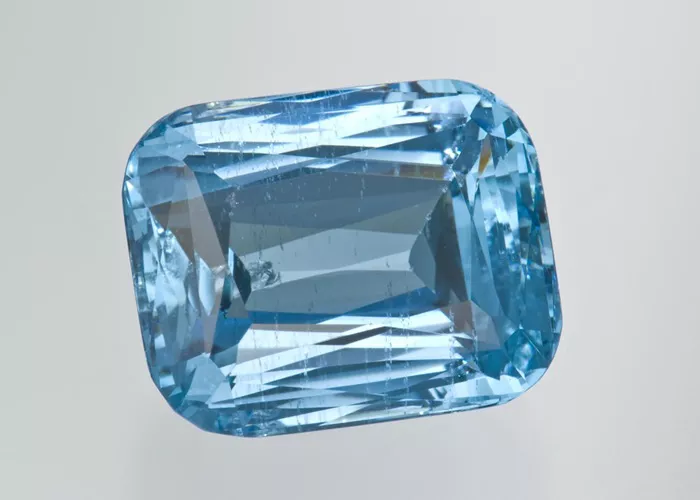I have seen many different types of sapphires, including convex round sapphires. Convex round sapphires are a unique type of sapphire that is prized for its distinctive shape and appearance. In this article, I will explain what convex round sapphires are, how they are formed, and why they are so valuable.
What is a Convex Round Sapphire?
A convex round sapphire is a type of sapphire that has a rounded, dome-like shape. Unlike traditional flat-cut sapphires, convex round sapphires have a curved surface that bulges outwards. This unique shape gives the sapphire a distinctive appearance that is highly sought after by collectors and jewelry enthusiasts.
How are Convex Round Sapphires Formed?
Convex round sapphires are formed in a similar way to traditional flat-cut sapphires. They are typically formed under high temperatures and pressures, which cause the sapphire crystal to grow in a specific shape. However, the difference between convex round sapphires and flat-cut sapphires is in the cutting and polishing process.
Convex round sapphires are cut and polished in a way that preserves their unique shape. The stone is carefully shaped and polished to create a smooth, rounded surface that bulges outwards. This process requires a great deal of skill and precision, as even minor variations in the shape of the stone can affect its appearance and value.
How are cabochon sapphires cut?
Cabochon sapphires are cut in a unique way that differs from traditional faceted gemstones. Instead of being cut with multiple flat surfaces to reflect light, cabochon sapphires are cut with a smooth, rounded surface that creates a domed shape. This shape allows the natural color and texture of the gemstone to be highlighted, rather than its brilliance or sparkle.
The process of cutting a cabochon sapphire begins with selecting a rough sapphire that is suitable for this type of cut. The rough stone is then shaped into a dome using a grinding wheel or other cutting tool, with the goal of creating a symmetrical shape that is free of any cracks or inclusions.
Once the dome shape is achieved, the cabochon sapphire is polished to a high shine using a series of abrasive materials. This process can take several hours, as the stone must be carefully polished to avoid any scratches or other imperfections.
Overall, the process of cutting a cabochon sapphire requires a high level of skill and expertise, as well as a deep understanding of the unique characteristics of this type of gemstone.
3 reasons to consider a cabochon sapphire engagement ring
Unique and distinctive appearance: Cabochon sapphires have a unique and distinctive appearance that sets them apart from traditional faceted gemstones. The smooth, rounded surface of a cabochon sapphire creates a subtle play of light and color that can be quite captivating. This can make a cabochon sapphire engagement ring an excellent choice for someone who wants a non-traditional ring that stands out from the crowd.
Durability: Sapphire is one of the hardest gemstones, with a rating of 9 on the Mohs scale of mineral hardness. This means that a cabochon sapphire engagement ring is durable and resistant to scratches and other types of wear and tear. This can be a good choice for someone who wants an engagement ring that will last for many years without losing its beauty or value.
Symbolism: Sapphires have been associated with many different meanings and symbols throughout history. In some cultures, sapphires are believed to represent wisdom, truth, and faithfulness. This can make a cabochon sapphire engagement ring a meaningful choice for someone who wants a ring that symbolizes their commitment to their partner and their shared values.
Why are Convex Round Sapphires Valuable?
Convex round sapphires are highly valued for their unique shape and appearance. The curved surface of the stone gives it a distinctively three-dimensional look that is unlike any other type of sapphire. This unique appearance makes convex round sapphires highly sought after by collectors and jewelry enthusiasts.
In addition to their unique appearance, convex round sapphires are also valued for their color and clarity. Like other types of sapphires, the color of a convex round sapphire can vary depending on the specific mix of trace elements present in the stone. The clarity of the stone is also an important factor, as a high-quality convex round sapphire will be relatively free of inclusions, which are internal flaws that can affect the gemstone’s appearance and value.
When appraising a convex round sapphire, there are several factors that need to be taken into account. The color and clarity of the stone are important factors, as are the cut and size of the gemstone. The unique shape of the stone will also play a role in determining its value.
In conclusion, convex round sapphires are a unique and valuable type of sapphire that is highly prized for its distinctive shape and appearance. These gemstones are formed in a similar way to traditional flat-cut sapphires, but are cut and polished in a way that preserves their unique shape. As a jewelry appraiser, I have seen firsthand the beauty and value of convex round sapphires, and I highly recommend them to anyone looking for a unique and rare gemstone.


